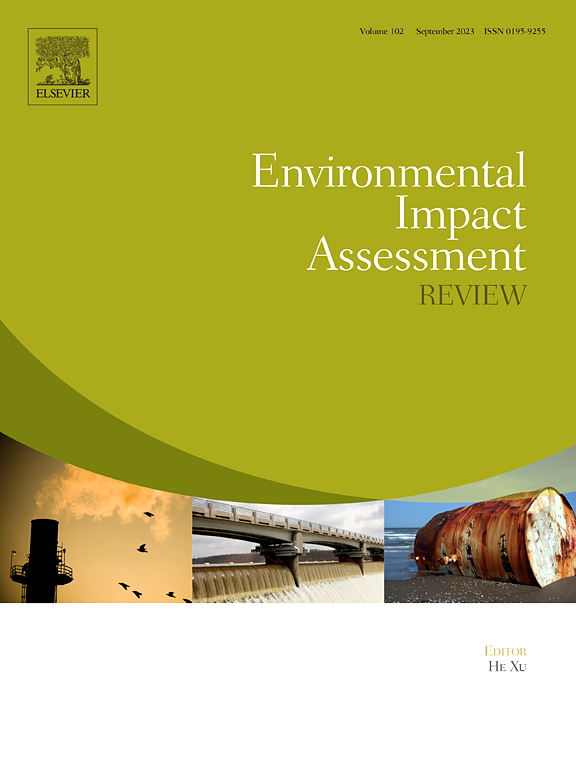基于gis的城市遗产景观视觉属性综合分析——以西湖为例
IF 9.8
1区 社会学
Q1 ENVIRONMENTAL STUDIES
引用次数: 0
摘要
城市遗产景观具有多层次的文化和美学价值,需要精确的视觉分析来支持保护和规划。然而,现有的视觉分析方法往往是碎片化的,无法充分捕捉其复杂的视觉空间特征。为了解决这一差距,本文提出了一个组合视觉分析框架,该框架集成了四种基于gis的视觉分析方法——累积视场(CV)、视觉大小(VM)、视场(FOV)分析和街景图像(SVI)分割。将这些方法应用于联合国教科文组织世界遗产地杭州西湖,探索湖-城-景关系,划分湖滨景观类型,解读标志性视点的空间构成。研究结果表明:(a) 4个具有高CV值和高VM值的区域与主要的建筑和景观地标重合,表明有目的性的空间设计策略,而“十大风景名胜区”中有一半受到能见度以外的象征或体验因素的影响;(b)沿湖滨道路确定了37种景观类型,揭示了植被遮挡潜在湖景的区域,以及设计权衡明显的区域;(c) 10个潜在的城市到湖泊的视觉走廊中只有两个仍然畅通无阻,这表明未经管理的植被是一个关键障碍;(d)这些见解为有针对性的视觉管理策略提供信息,包括植被控制、视点激活和循环优化。本研究强调了单一方法的局限性,如SVI对地形变化的不敏感,并指出多视角的VAMs整合可以为城市遗产景观的管理提供更深入的空间洞察和更具可操作性的指导。本文章由计算机程序翻译,如有差异,请以英文原文为准。
Enhancing visual attribute comprehension of urban heritage landscapes using combined GIS-based visual analysis methods: West Lake as a case study
Urban heritage landscapes, with their layered cultural and aesthetic values, require precise visual analysis to support conservation and planning. However, existing visual analysis methods are often fragmented and fail to fully capture their complex visual-spatial characteristics. To address this gap, this paper proposes a combined visual analysis framework that integrates four GIS-based visual analysis methods—cumulative viewshed (CV), visual magnitude (VM), field of view (FOV) analysis, and street-view image (SVI) segmentation. These methods were applied to the UNESCO World Heritage Site of West Lake in Hangzhou, China, to explore lake–city–landscape relationships, classify lakeside landscape types, and interpret the spatial composition of iconic viewpoints. Findings indicate that: (a) four zones with both high CV and VM values coincide with key architectural and scenic landmarks, suggesting intentional spatial design strategies, while half of the “Ten Scenic Places” are influenced by symbolic or experiential factors beyond visibility; (b) 37 landscape types were identified along lakeside roads, revealing areas where vegetation obscures potential lake views and where design trade-offs are evident; (c) only two of ten potential city-to-lake visual corridors remain unobstructed, pointing to unmanaged vegetation as a critical barrier; and (d) these insights inform targeted visual management strategies, including vegetation control, viewpoint activation, and circulation optimization. This study highlights the limitations of single-method approaches, such as SVI's insensitivity to topographic variation, and suggests that a multi-perspective integration of VAMs can yield deeper spatial insights and more actionable guidance for managing urban heritage landscapes.
求助全文
通过发布文献求助,成功后即可免费获取论文全文。
去求助
来源期刊

Environmental Impact Assessment Review
ENVIRONMENTAL STUDIES-
CiteScore
12.60
自引率
10.10%
发文量
200
审稿时长
33 days
期刊介绍:
Environmental Impact Assessment Review is an interdisciplinary journal that serves a global audience of practitioners, policymakers, and academics involved in assessing the environmental impact of policies, projects, processes, and products. The journal focuses on innovative theory and practice in environmental impact assessment (EIA). Papers are expected to present innovative ideas, be topical, and coherent. The journal emphasizes concepts, methods, techniques, approaches, and systems related to EIA theory and practice.
 求助内容:
求助内容: 应助结果提醒方式:
应助结果提醒方式:


